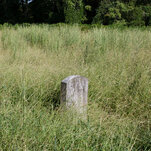No firm accounting exists of how many Black cemeteries there are, or how many have disappeared to urban development and highway construction, but historians say that in the flowering of Black
To be sure, some Black cemeteries managed to hold on through the years of Jim Crow and the Great Migration, as about six million Black people moved out of the South to places in the Northeast, West and Midwest and could no longer tend to or visit the old family plots. Laurel Grove South Cemetery in Savannah, Ga., one of the biggest cemeteries in the South for free Black people before the end of slavery, is now operated by the city. At South-View Cemetery in Atlanta, chartered in 1886 by nine Black businessmen, current board members and staff are descendants of the founders. Representative John Lewis was recently buried there.
And in many cases, researchers and volunteers said, their success can be attributed to the passion of memory and meaning that these places evoked. At Magnolia in Helena, Ark., a schoolteacher named Para Conner, who died a few years ago at 98, was for decades the cemetery’s guiding light.
“She was the backbone,” Mr. Williams said.
Sometimes, however, the reliance on a few steadfast believers has resulted in dysfunction. At Randolph, a struggle over access to old cemetery records dragged on for years. Without proper burial records, Ms. Richey said, chaos sometimes ensued, with families buying plots and digging graves, only to find unmarked bones already there.

At Richmond’s twinned Black cemeteries, Evergreen and East End, questions of control have divided the community.





